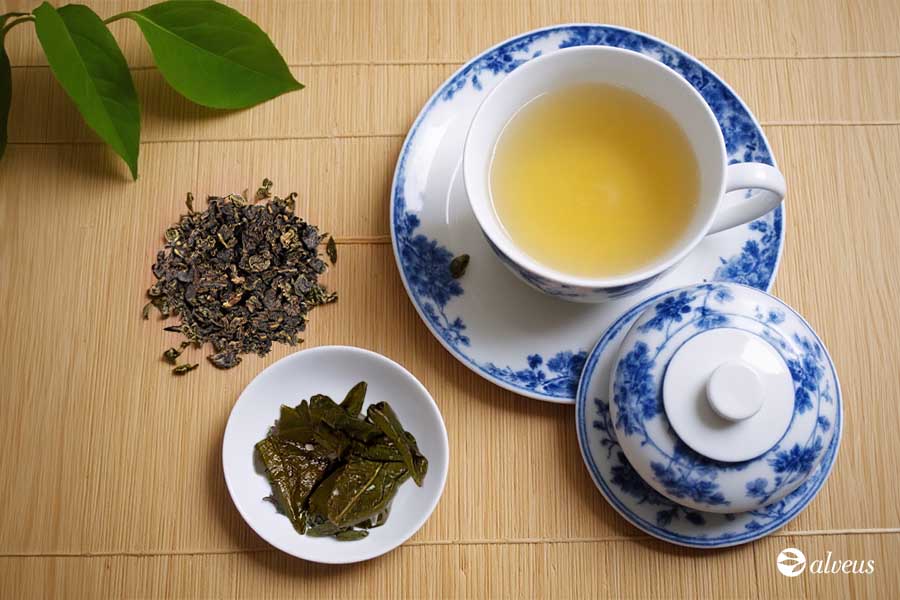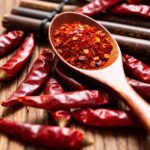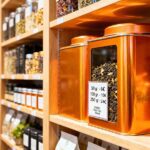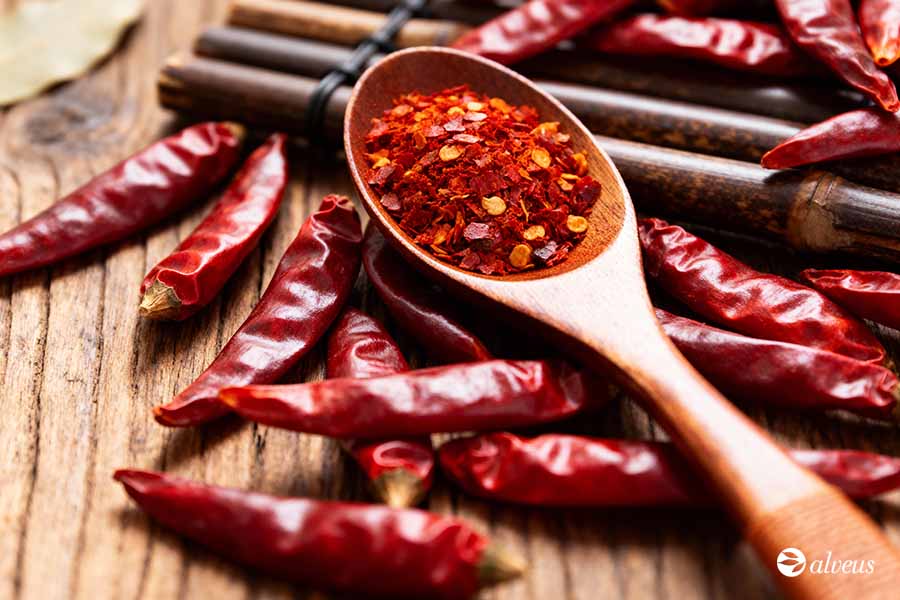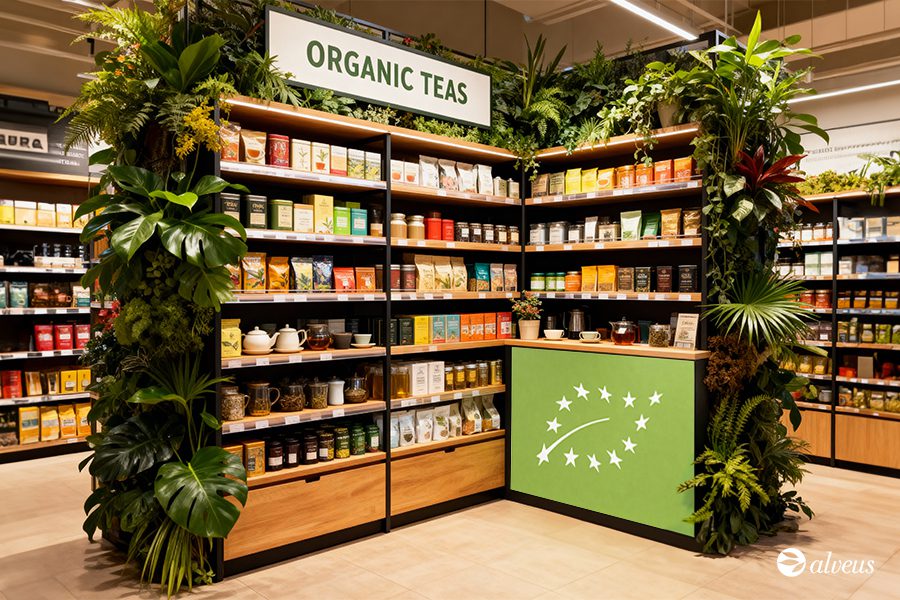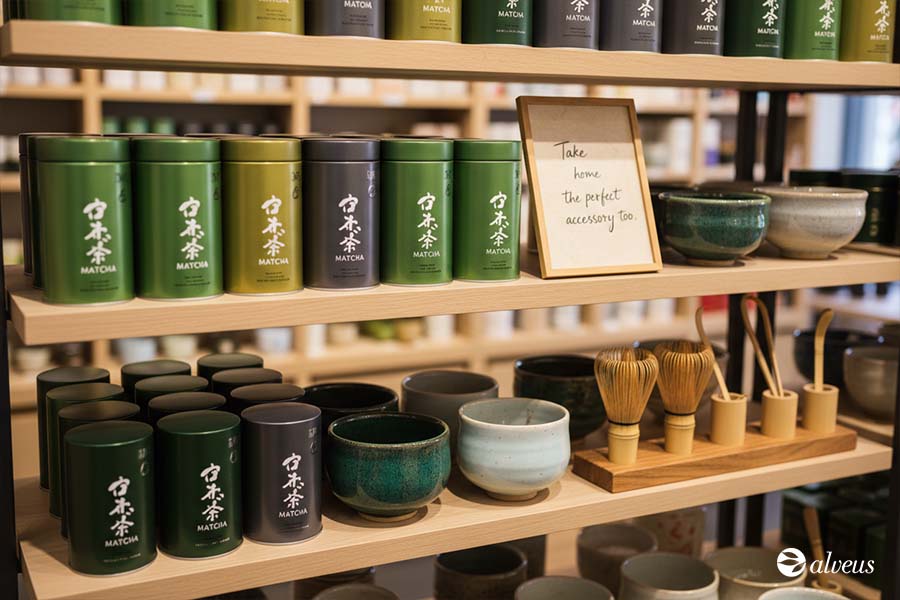Among the most prestigious teas in China, there is one that has become a global benchmark: Tie Guan Yin.
Also known as Tie Guan Yin oolong tea or the “Iron Goddess of Mercy”, this tea from Fujian province stands out not only for its quality but also for its history, legends and sensory complexity.
It is far from being just another product in a tea company’s catalogue; Tie Guan Yin is a true storytelling tool, a means to build customer loyalty and a way to add distinctive value.
In this article, we will explore its origins, legends, production styles, and current trends to understand why it remains one of the most iconic oolongs in the world.
Etymology and Names
The name Tie Guan Yin literally translates as “Iron Guanyin”.
Guanyin is a highly revered figure in Chinese tradition: known as the Goddess of Mercy, the Bodhisattva of Compassion in Buddhist belief, the protector of those in need, and a symbol of kindness and benevolence. Her image has inspired temples, legends, and even this tea, to which an almost spiritual character is attributed.
Over time, the name has been translated and adapted in many ways across the world. Thus, we find variants such as Ti Kuan Yin, Tit Kwun Yum, Ti Kwan Yin, Iron Goddess of Mercy or even Iron Buddha. In more technical language, and among tea professionals, it is often simply abbreviated as “TGY”.
The diversity of names reflects not only the international expansion of this oolong but also how each culture has interpreted and made it its own. Yet, they all point to the same essence: a legendary tea associated with the strength of “iron” and the compassionate gentleness of Guanyin.
Legends of Tie Guan Yin Tea
Few stories possess as much symbolic power as those surrounding Tie Guan Yin oolong tea. It is not merely regarded as a beverage, but as a tea wrapped in tales of devotion, discovery, and gratitude.
As with many great Chinese teas, the line between myth and history blurs — and that is precisely what makes it both a cultural and a gastronomic treasure.
The Legend of Wei
It is said that in Anxi, the birthplace of Tie Guan Yin, there once stood a neglected temple. Inside was an iron statue of Guanyin, the Goddess of Mercy.
Each day, a farmer named Wei passed by on his way to the fields. Although he lacked the means to restore the temple, he decided to do what he could: he cleaned it and brought simple offerings such as incense.
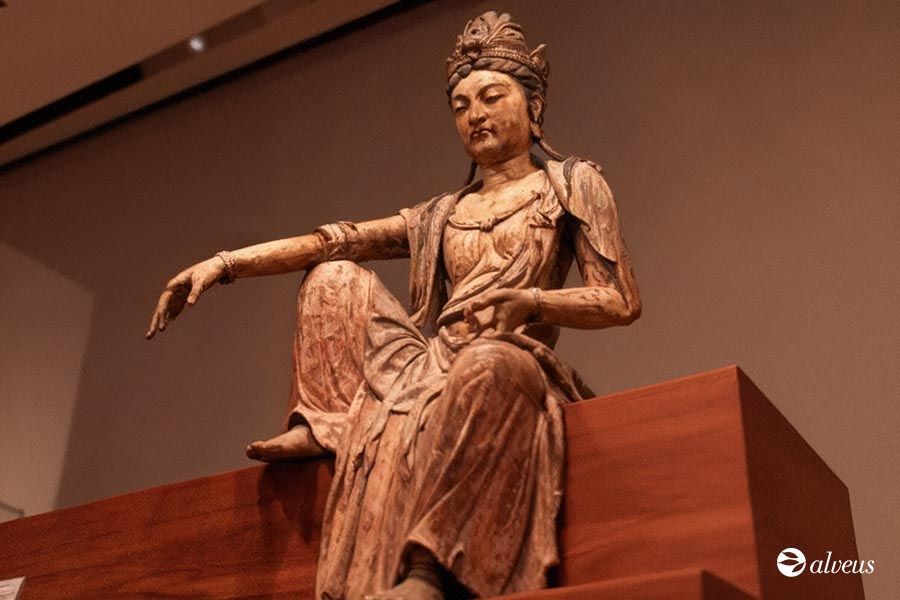
In time, his devotion was rewarded; one night, Guanyin appeared to him in a dream and revealed a cave where he would find a treasure. There, he discovered a single tea shoot, which he tended with care until it grew into a vigorous bush.
From its leaves came a tea of exceptional quality. Wei shared cuttings with his neighbours, and together they prospered thanks to this plant. The once-ruined temple was restored and became a place of reference for the community.
The Legend of Wang
Another version of the origin of Tie Guan Yin tells of Wang, a scholar who was walking through the Xiping area. On his path, he discovered a tea plant growing beneath a rock dedicated to Guanyin. Fascinated by it, he took the plant home and cultivated it in his garden.
Some time later, Wang had the opportunity to appear before Emperor Qianlong, one of the great tea lovers and promoters in Chinese history. As a mark of respect, he offered the emperor this newly discovered tea.
Impressed by its quality and flavour, the emperor asked about its origin. Upon learning that it came from Guanyin’s rock, he named it Tie Guan Yin — the Iron Guanyin.
Although we will never know for certain which of these legends truly marks the origin of Tie Guan Yin tea, both have accompanied this oolong throughout its history. Beyond their veracity, they endow the tea with a unique mythical and cultural aura.
Origin and Evolution of this Oolong
Tie Guan Yin originated in the 19th century in Anxi, a county in Fujian province, in southeastern China. Its environment — with maritime influence and a mountainous interior featuring a temperate, humid climate — proved ideal for oolong production, giving rise to a tea remarkable for its freshness and complexity.
Over time, its cultivation spread to Taiwan, where the tradition adapted to new conditions. In Anxi, the lighter and more floral styles became established, known as Jade Tie Guan Yin, while in regions such as Muzha and Nantou, more roasted and robust versions developed.
Today, Tie Guan Yin remains a premium tea, with high-grade harvests reaching some of the highest prices in the market. Beyond its economic value, it is a tea that embodies history, craftsmanship, and constant evolution, while maintaining the essence that made it a global benchmark.
Production and Cultivation of this Tea
Today, the two main centres of Tie Guan Yin tea production are Anxi (Fujian) and Muzha (Taiwan), each with its own distinct style that has enriched the oolong category.
In Anxi, production focuses on highlighting the tea’s freshness and floral character. The leaves undergo very light oxidation and minimal roasting, resulting in what are known as Jade Tie Guan Yin teas — golden in liquor with notes reminiscent of orchids, white fruits, and soft honey.
Producers in Anxi prioritise preserving aromatic purity and elegance in the cup, seeking a profile closer to that of a green tea, yet with the complexity characteristic of oolong.
In contrast, Muzha (Taiwan) places greater emphasis on roasting. Here, Muzha Tie Guan Yin develops a much warmer and deeper palette: reddish-toned liquor, aromas of nuts, light cocoa, and even mineral nuances.
This style reflects the Taiwanese masters’ adaptation to their own terroir, producing a tea with more body — ideal for those who appreciate intensity and persistence on the palate.
Both regions contribute to the diversity and allow businesses to offer contrasting experiences within the same tea category.
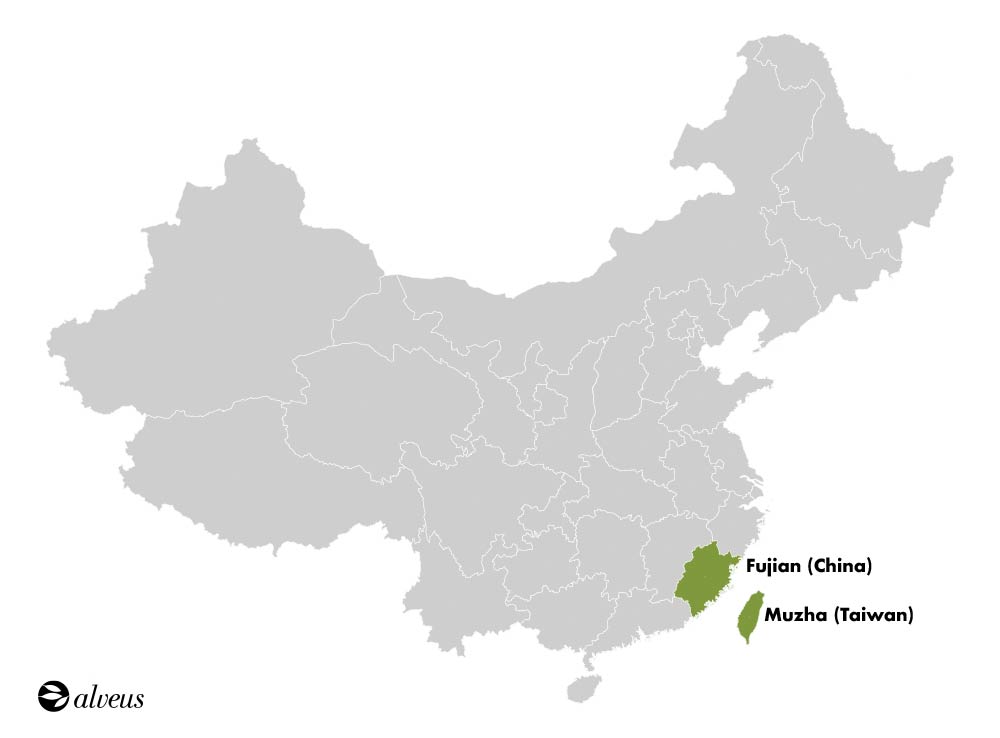
Varieties and Types of Tie Guan Yin Oolong
The diversity of Tie Guan Yin oolongs is the result of three key factors: the degree of roasting, the harvest season, and the region of production. This wealth of nuances allows professionals in the sector to create a versatile catalogue tailored to different audiences.
According to the Degree of Roasting
- Jade Tie Guan Yin: Characterised by lightness, freshness, and an intensely floral aroma. Its profile resembles that of a green tea, but with greater complexity on the palate. It is the most accessible style, perfect for introducing new customers to the world of oolongs.
- Moderately Roasted: Balances floral freshness with deeper, more complex notes. A highly appreciated style among those seeking versatility in an oolong.
- Heavily Roasted (Traditional): With warm aromas, nutty and caramel notes, and a mineral undertone, this style offers a robust and persistent character, ideal for more experienced consumers.
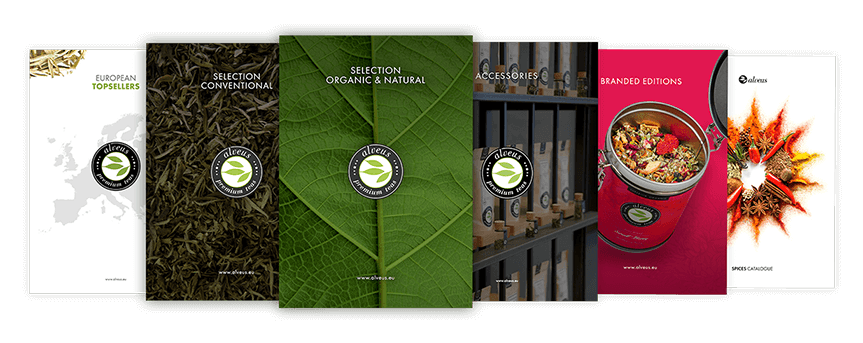
According to the Harvest Season
- Spring: Considered the most prized in terms of overall quality. Its infusions are balanced and rich in nuances.
- Autumn: Offers an intense and fragrant aroma, though with a slightly less deep flavour than the spring harvest.
- Summer: Generally less valued, but distinguished between early harvest (June–July), which is more accepted, and late harvest (August), of inferior quality.
- Winter: Produced in very limited quantities, making it a market rarity sought after by collectors and experts.
The Guan Yin Wang
The tea Guan Yin Wang, also known as “King Guan Yin”, stands at the pinnacle of this renowned oolong variety.
This category combines the best of the jade style and autumn harvests, offering a refined and exceptional profile that places it among the most exclusive Tie Guan Yin teas.
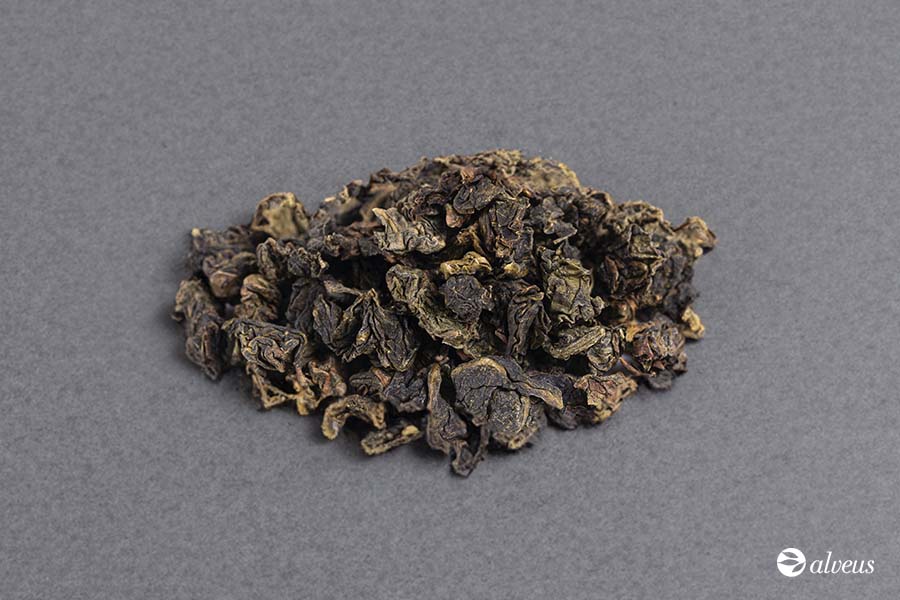
* Tie Guan Yin Premium BIO, oolong tea of this renowned variety, available for wholesale purchase through our Alveus online store.
Production of Tie Guan Yin Tea
This renowned oolong is one of the most complex teas to produce in the tea world. Every stage demands precision and expertise, making its manufacture a true work of craftsmanship.
Although Tie Guan Yin follows the general oolong production scheme (plucking, withering, partial oxidation, fixation, rolling, and drying), its true identity lies in the subtle variations that make it unique.
For a full breakdown of the oolong production process, you can read our article “The Complete Oolong Tea Production Process.”
What sets Tie Guan Yin apart from other oolongs can be summarised in four essential aspects:
- Level of Oxidation: In Jade Tie Guan Yin, oxidation is light (10–20%), which provides freshness and a floral profile reminiscent of green tea. In the more roasted styles, oxidation may reach 40–50%, developing warm and complex notes.
- Rolling Shape: The leaves are shaped into compact, dense pearls — a distinctive feature compared to other oolongs.
- Roasting: In Tie Guan Yin, roasting is not uniform but varies depending on the desired tea style. In Jade Tie Guan Yin, the roasting is very light to preserve freshness and floral aromas.
For moderately roasted styles, heat is applied for longer to balance floral and complex notes. In traditionally roasted Tie Guan Yin, an intense roast develops nutty and caramel aromas with a deeper body.
This variability requires precise control of temperature, time, and the repetition of roasting sessions.
- Tradition and Craftsmanship: In Anxi, each producer applies techniques passed down through generations, carefully overseeing each phase to maximise the tea’s complexity and elegance. This dedication has made Tie Guan Yin a global reference for oolong tea.
In summary, although it follows the same production logic as other oolongs, Tie Guan Yin stands out for its controlled oxidation, unique rolling method, diversity of roasting styles, and artisanal precision — all contributing to its singular sensory profile that makes it unmistakable.
Sensory Profile and Infusion
Tie Guan Yin stands out for its aromatic and gustatory richness, which changes according to its style and roasting level, offering unique experiences in every cup.
Aroma
Light Tie Guan Yin teas, such as the Jade style, are known for their delicate, floral fragrance, with notes of orchid, orange blossom, and gardenia that awaken the senses even before tasting.
The more roasted styles, typical of Muzha, develop warm aromas of nuts, honey, and caramel, adding depth and complexity.
Flavour
The flavour profiles range from fresh and vegetal — soft and light in the Jade versions — to more complex and rounded in the roasted ones, with hints of nuts, light cocoa, and subtle smoky undertones.
This spectrum allows for tasting experiences tailored to both newcomers to oolong and seasoned tea enthusiasts.
Liquor
The colour of the tea reflects its style: lightly roasted Tie Guan Yin presents a bright golden hue, while the roasted versions show a deep reddish amber — a preview of the aromatic and flavour complexity in each infusion.
Infusion
Tie Guan Yin is particularly sensitive to water quality and infusion temperature. For Jade styles, a temperature between 85–90 °C is recommended, while roasted teas can tolerate up to 95 °C. This precision is key to highlighting its aromas and flavours.
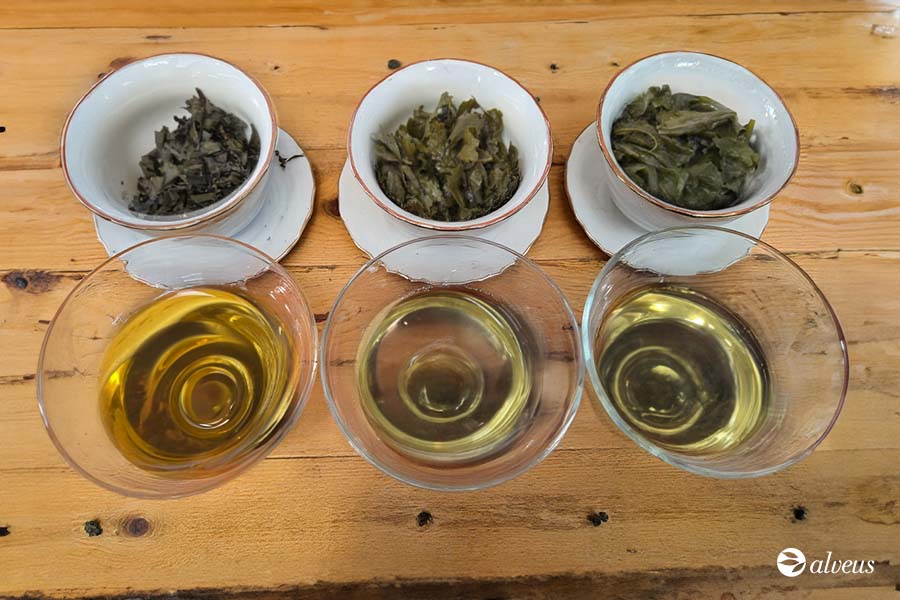
The Present and Strategic Value of Tie Guan Yin
Tie Guan Yin remains a benchmark in the world of tea, both for its tradition and history and for its ability to adapt to new contexts. Its aromatic profile, together with the variety of styles, makes it ideal for pure consumption — appreciated by those who enjoy every nuance of the infusion.
In Anxi and other producing areas, Tie Guan Yin forms part of welcoming and hospitality ceremonies, a cultural detail that adds history and context for the more curious customers.
At the same time, its sensory versatility has opened the door to new applications: gourmet pairings, desserts, and signature mixology, offering opportunities for collaboration and business.
This approach allows Tie Guan Yin not only to retain its status as a premium tea but also to position itself as a dynamic product, adaptable to current market trends.
Ultimately, understanding its history, varieties, production techniques, and sensory profile is not merely a cultural exercise — it is a strategic tool.
It enables tea professionals to differentiate their offering, enrich the customer experience, and keep alive the tradition of a tea that has transcended borders.


